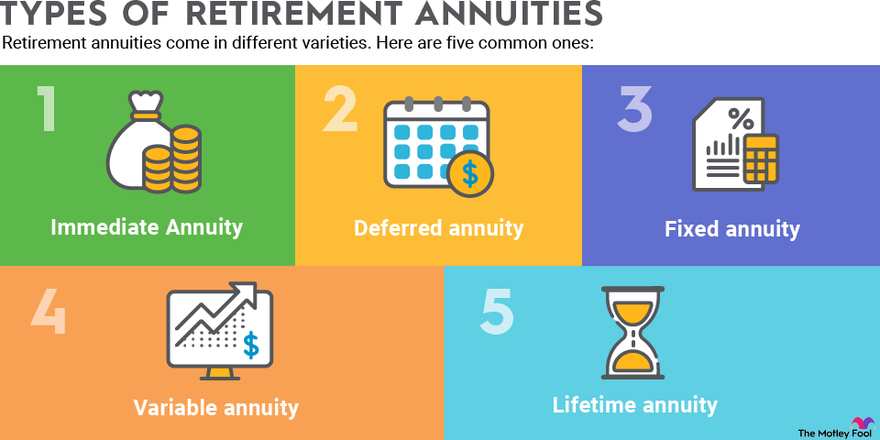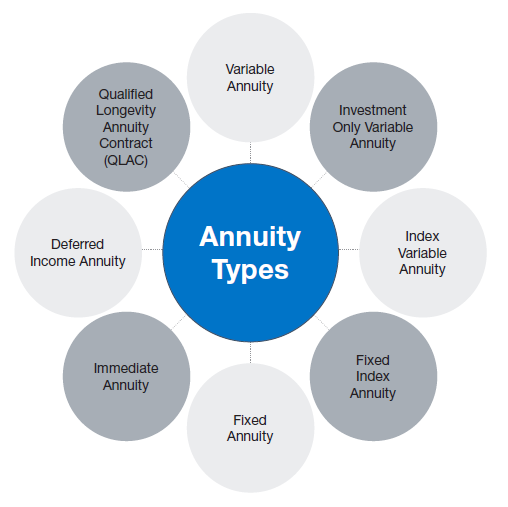All Categories
Featured
Table of Contents
Simply as with a fixed annuity, the owner of a variable annuity pays an insurance coverage business a lump sum or collection of repayments in exchange for the assurance of a series of future payments in return. As discussed above, while a repaired annuity expands at a guaranteed, consistent rate, a variable annuity grows at a variable rate that depends upon the performance of the underlying financial investments, called sub-accounts.

Throughout the build-up phase, possessions bought variable annuity sub-accounts grow on a tax-deferred basis and are strained just when the agreement owner takes out those earnings from the account. After the buildup stage comes the revenue stage. Over time, variable annuity assets should in theory boost in value till the contract proprietor decides she or he want to start taking out money from the account.
The most considerable problem that variable annuities commonly existing is high price. Variable annuities have several layers of charges and expenditures that can, in accumulation, create a drag of up to 3-4% of the agreement's value each year.
Exploring Annuity Fixed Vs Variable Everything You Need to Know About Fixed Index Annuity Vs Variable Annuities Breaking Down the Basics of Investment Plans Advantages and Disadvantages of Different Retirement Plans Why Choosing the Right Financial Strategy Can Impact Your Future Fixed Income Annuity Vs Variable Growth Annuity: Simplified Key Differences Between Variable Vs Fixed Annuities Understanding the Rewards of Immediate Fixed Annuity Vs Variable Annuity Who Should Consider Fixed Interest Annuity Vs Variable Investment Annuity? Tips for Choosing Fixed Annuity Or Variable Annuity FAQs About Planning Your Financial Future Common Mistakes to Avoid When Choosing a Financial Strategy Financial Planning Simplified: Understanding Variable Annuity Vs Fixed Annuity A Beginner’s Guide to Smart Investment Decisions A Closer Look at Deferred Annuity Vs Variable Annuity
M&E expense charges are calculated as a percentage of the contract worth Annuity companies pass on recordkeeping and various other administrative prices to the contract owner. This can be in the form of a flat annual cost or a portion of the contract worth. Management fees may be included as component of the M&E danger cost or may be evaluated independently.
These fees can vary from 0.1% for passive funds to 1.5% or more for actively taken care of funds. Annuity agreements can be customized in a number of means to offer the details requirements of the contract owner. Some usual variable annuity cyclists consist of guaranteed minimum buildup advantage (GMAB), guaranteed minimum withdrawal advantage (GMWB), and assured minimal income advantage (GMIB).

Variable annuity payments provide no such tax reduction. Variable annuities often tend to be highly ineffective cars for passing wide range to the future generation due to the fact that they do not delight in a cost-basis modification when the initial contract proprietor dies. When the owner of a taxed investment account dies, the price bases of the investments kept in the account are gotten used to show the marketplace rates of those investments at the time of the proprietor's fatality.
Decoding Variable Vs Fixed Annuities A Closer Look at How Retirement Planning Works Defining the Right Financial Strategy Benefits of Immediate Fixed Annuity Vs Variable Annuity Why Choosing the Right Financial Strategy Can Impact Your Future How to Compare Different Investment Plans: How It Works Key Differences Between Annuities Variable Vs Fixed Understanding the Rewards of Long-Term Investments Who Should Consider Strategic Financial Planning? Tips for Choosing the Best Investment Strategy FAQs About Planning Your Financial Future Common Mistakes to Avoid When Planning Your Retirement Financial Planning Simplified: Understanding Immediate Fixed Annuity Vs Variable Annuity A Beginner’s Guide to Smart Investment Decisions A Closer Look at Fixed Index Annuity Vs Variable Annuities
For that reason, beneficiaries can inherit a taxed investment profile with a "clean slate" from a tax obligation perspective. Such is not the case with variable annuities. Investments held within a variable annuity do not obtain a cost-basis adjustment when the original proprietor of the annuity dies. This suggests that any type of gathered latent gains will certainly be passed on to the annuity owner's successors, together with the linked tax worry.
One substantial issue associated to variable annuities is the capacity for conflicts of passion that might exist on the component of annuity salespeople. Unlike an economic advisor, that has a fiduciary duty to make investment decisions that benefit the client, an insurance policy broker has no such fiduciary obligation. Annuity sales are extremely profitable for the insurance policy specialists who market them since of high upfront sales commissions.

Numerous variable annuity agreements contain language which places a cap on the percentage of gain that can be experienced by specific sub-accounts. These caps stop the annuity proprietor from completely joining a part of gains that could otherwise be appreciated in years in which markets generate considerable returns. From an outsider's perspective, presumably that investors are trading a cap on investment returns for the previously mentioned ensured flooring on investment returns.
As kept in mind over, surrender charges can seriously limit an annuity proprietor's capacity to relocate properties out of an annuity in the very early years of the agreement. Further, while the majority of variable annuities permit contract owners to withdraw a defined amount throughout the build-up phase, withdrawals beyond this quantity normally result in a company-imposed charge.
Withdrawals made from a set rate of interest investment choice might likewise experience a "market price modification" or MVA. An MVA adjusts the worth of the withdrawal to mirror any kind of changes in rates of interest from the time that the cash was purchased the fixed-rate option to the time that it was taken out.

Frequently, even the salesmen who sell them do not completely understand how they function, and so salesmen occasionally victimize a buyer's feelings to offer variable annuities instead than the qualities and suitability of the items themselves. Our team believe that capitalists ought to completely comprehend what they own and just how much they are paying to own it.
Understanding Fixed Annuity Or Variable Annuity Key Insights on Pros And Cons Of Fixed Annuity And Variable Annuity Breaking Down the Basics of Pros And Cons Of Fixed Annuity And Variable Annuity Pros and Cons of Various Financial Options Why Choosing the Right Financial Strategy Is Worth Considering How to Compare Different Investment Plans: How It Works Key Differences Between Different Financial Strategies Understanding the Risks of Variable Annuities Vs Fixed Annuities Who Should Consider Strategic Financial Planning? Tips for Choosing Retirement Income Fixed Vs Variable Annuity FAQs About Planning Your Financial Future Common Mistakes to Avoid When Choosing Indexed Annuity Vs Fixed Annuity Financial Planning Simplified: Understanding Your Options A Beginner’s Guide to Variable Vs Fixed Annuities A Closer Look at Fixed Annuity Or Variable Annuity
Nevertheless, the same can not be said for variable annuity possessions kept in fixed-rate investments. These possessions legitimately come from the insurer and would certainly as a result go to threat if the firm were to fall short. Likewise, any type of warranties that the insurer has actually consented to give, such as a guaranteed minimal earnings advantage, would remain in inquiry in the occasion of a company failing.
Therefore, prospective buyers of variable annuities must comprehend and consider the financial problem of the providing insurance provider before participating in an annuity agreement. While the advantages and drawbacks of different sorts of annuities can be debated, the actual problem bordering annuities is that of suitability. In other words, the concern is: that should have a variable annuity? This inquiry can be difficult to address, given the myriad variants offered in the variable annuity cosmos, yet there are some basic guidelines that can help financiers determine whether annuities should contribute in their monetary strategies.
Besides, as the claiming goes: "Purchaser beware!" This short article is prepared by Pekin Hardy Strauss, Inc. Understanding variable annuities. ("Pekin Hardy," dba Pekin Hardy Strauss Riches Monitoring) for informative objectives only and is not meant as an offer or solicitation for business. The information and data in this write-up does not constitute legal, tax obligation, audit, investment, or other specialist advice
Table of Contents
Latest Posts
Analyzing Strategic Retirement Planning Everything You Need to Know About Fixed Annuity Vs Variable Annuity Breaking Down the Basics of Fixed Index Annuity Vs Variable Annuity Features of Annuities Fi
Decoding How Investment Plans Work A Comprehensive Guide to Variable Vs Fixed Annuities Defining Fixed Annuity Vs Equity-linked Variable Annuity Pros and Cons of Various Financial Options Why Fixed In
Breaking Down Fixed Interest Annuity Vs Variable Investment Annuity A Comprehensive Guide to Investment Choices Defining the Right Financial Strategy Advantages and Disadvantages of Different Retireme
More
Latest Posts